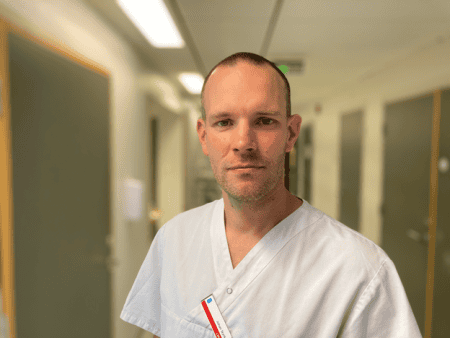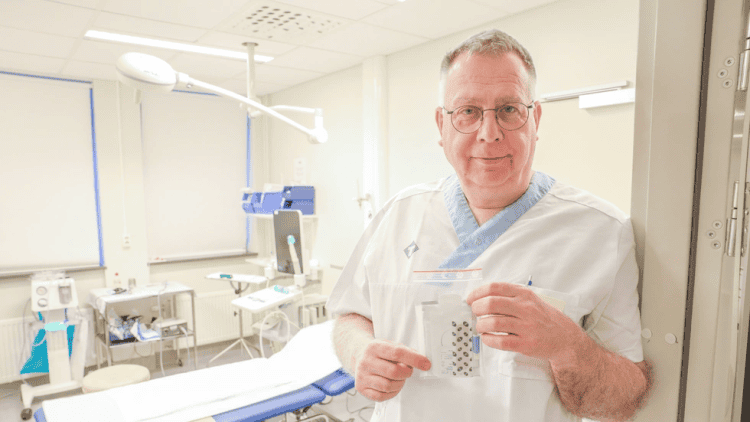Transforming Prostate Cancer Testing and Early Detection with Microsampling
Prostate cancer is the most common form of cancer among men in Sweden and a leading cause of cancer-related deaths. Despite the critical importance of early detection, participation in PSA (prostate-specific antigen) testing remains alarmingly low. In northern Sweden only around 46% of eligible men opt to take the test.

From Living Room to Lab: Microsampling Simplified
Capitainer’s quantitative technology allows individuals to collect a precise amount of blood via a simple finger prick. This method has now been incorporated into a PSA self-testing kit mailed to participants. Once the sample is collected, it can be conveniently returned to the lab via regular mail for analysis.
As Johan Styrke, senior urologist and project leader from Sundsvall Hospital, explained in an interview with Dagens Medicin, this innovation eliminates logistical barriers to testing:
”The man doesn’t need to book a time, and the healthcare system doesn’t need to schedule one either, so there’s a win on multiple levels—assuming the method works well.”
The Problem: Low Participation and Unequal Access
Northern Sweden’s vast geography often creates hurdles for routine medical testing. Long travel distances to healthcare centers, combined with the challenges of taking time off work, have contributed to low PSA testing rates. As noted in SVT Västerbotten, these barriers disproportionately affect men in rural and remote areas, underscoring the need for a more equitable approach to cancer screening.
”We believe that at-home sampling will lead to higher participation, particularly for men who work during the day or live far from their healthcare center. This will create a more equal opportunity for testing.”
Pilot Testing in Northern Sweden
The project is currently in its pilot phase, targeting 100 men in Västerbotten and Västernorrland who are performing dual tests: one at home using Capitainer’s kit and another via traditional venous sampling at their healthcare center. Early results indicate that the at-home method performs on par with venous blood draws in laboratory conditions. As the pilot progresses, the study aims to validate the method’s effectiveness in real-world settings.
The next phase, outlined in articles in Läkemedelsvärlden and Norran, will expand to 450 men across Västerbotten, Norrbotten, Västernorrland, and Jämtland Härjedalen. If successful, the project will scale up further to include 10,000 men, with the ultimate goal of integrating at-home sampling into Sweden’s national prostate cancer screening program.

Ove Andrén shows the sampling kit that is sent out during the study.
Photo: Region Västerbotten
A Vision for the Future: Saving Lives and Resources
Beyond improving accessibility, this approach offers several key benefits. As MedTech Magazine reported, the potential for self-testing to increase participation rates could save lives by enabling earlier detection and treatment of prostate cancer. The project also aims to reduce the burden on primary care, freeing up resources currently dedicated to scheduling and conducting in-clinic blood draws.
”In northern Sweden, the socioeconomic benefits of home sampling will likely be significant, given the long distances to healthcare facilities,” said Johan Styrke in Läkemedelsvärlden. ”By increasing participation, we hope to lower the number of men who die from prostate cancer each year.”
A Step Toward Equal Healthcare
At-home testing represents a leap forward in the pursuit of equitable healthcare. By addressing logistical and socioeconomic barriers, this method ensures that all men, regardless of where they live or their work schedules, have equal access to vital diagnostic tests. As Dagens Medicin highlighted, this approach transforms prostate cancer screening into a matter of equity:
”Regardless of where you live, you should have access to the same type of diagnostic opportunities,” said Johan Styrke.
The potential impact of this project is significant. With financial support from Medtech4Health via Vinnova, and a research grant of 1.4 million SEK, the project is well-positioned to drive change. If the studies demonstrate that self-testing increases participation rates, the results could pave the way for broader implementation across Sweden and beyond.
Do you have questions about how to use Capitainer devices?
Our friendly customer support team is here to answer any enquiries.
